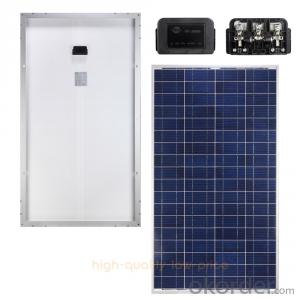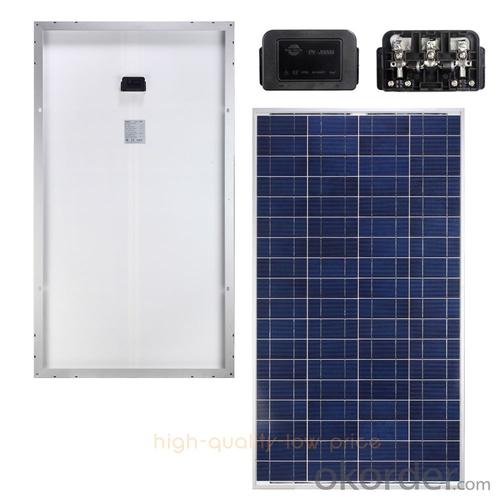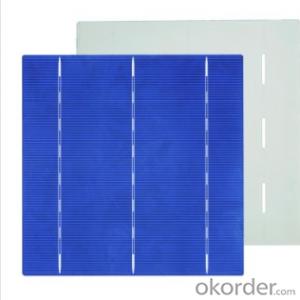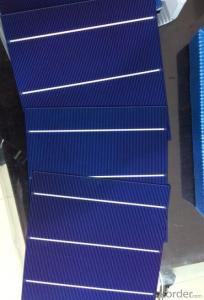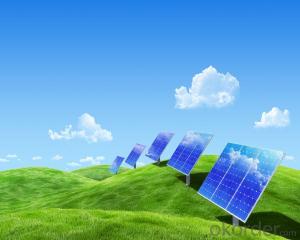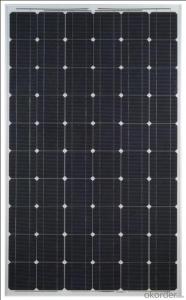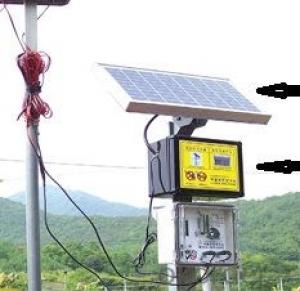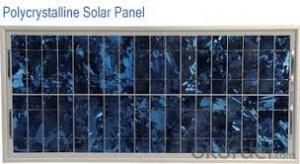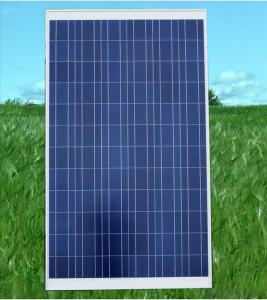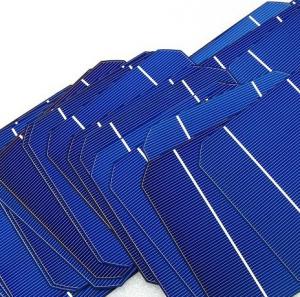310W Sphelar Solar Cells Poly Solar Panel with 25 Years Warranty CNBM
- Loading Port:
- Qingdao
- Payment Terms:
- TT OR LC
- Min Order Qty:
- 10 set
- Supply Capability:
- 300000 set/month
OKorder Service Pledge
OKorder Financial Service
You Might Also Like
Polycrystalline Solar Modules
CNBM offers a range of small, medium and large polycrystalline solar modules, designed for a range of requirements.
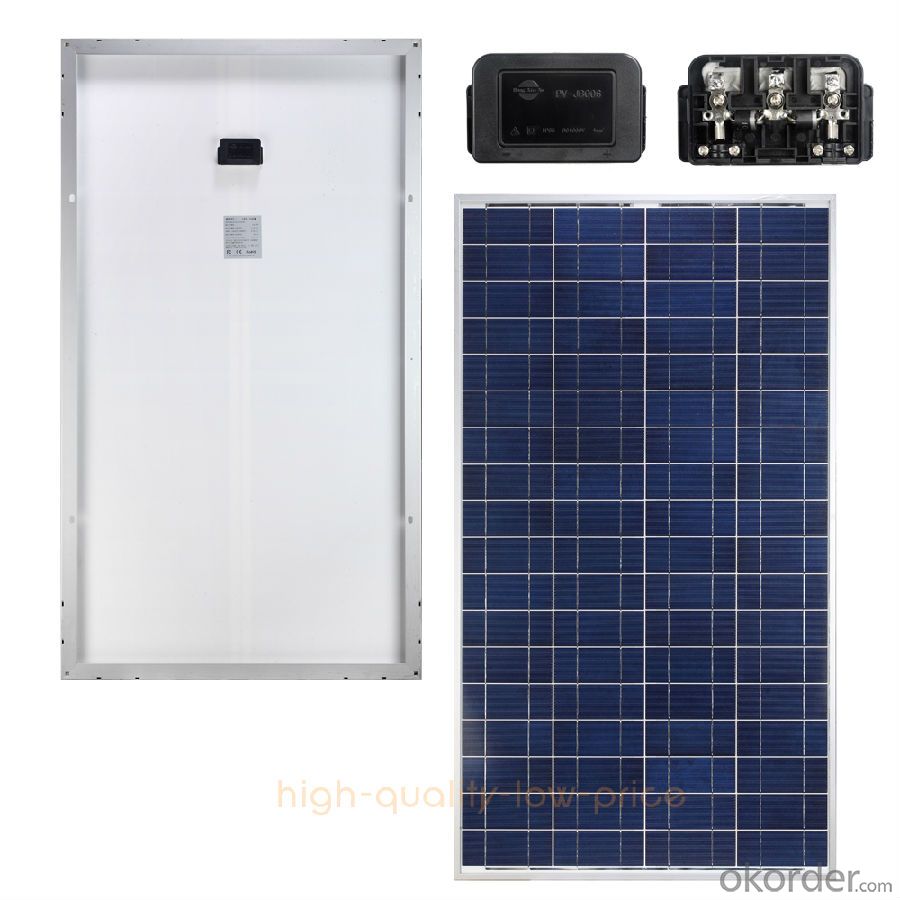
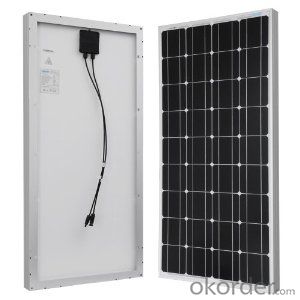
Specificatios:
Tolerance | +/-3% |
Cell | Polycrystalline silicon solar cells (156 x 156mm) |
N0. of Cells | 60 (10 x 6) |
Dimension of Modules (mm) | 1650 x 990 x 40 |
Weight (kg) | 25.5 |
Limits:
Operating Temperature | -40~+85? |
Storage Temperature | -40~+85? |
Maximum System Voltage | 1000 VDC max. |
Hail Impact | Diameter of 28mm with impact speed |
Temperature and Coefficients:
NOCT | 48C+/-2? |
Voltage temperature coefficient (%/K) | -0.35 |
Current temperature coefficient (%/K) | 0.05 |
Power temperature coefficient (%/K) | -0.45 |
Characteristics:
Model: | SGM-200P | SGM-210P | SGM-220P |
Max-power voltage Vmp (V) | 29.2 | 29.4 | 29.41 |
Max-power current Imp (A) | 6.85 | 7.14 | 7.48 |
Open-circuit voltage Voc (V) | 36.5 | 36.69 | 36.9 |
Short-Circuit Current Isc (A) | 7.28 | 7.6 | 7.93 |
Max-power Pm(W) | 200 | 210 | 220 |
Model: | SGM-230P |
Max-power voltage Vmp (V) | 29.8 |
Max-power current Imp (A) | 7.72 |
Open-circuit voltage Voc (V) | 37.31 |
Short-Circuit Current Isc (A) | 8.19 |
Max-power Pm(W) | 230 |
STC: Irradiance 1000W/m2, module temperature 25?, AM-=1.5
Poly Crystalline Solar Panels Specifications Range
Maximum Power (Pm) | Dimension | Weight | Operating Voltage (Vmp) | Operating Current (Imp) | Open Circuit Voltage (Voc) | Short Circuit Current (Isc) |
0.45W | 140x80x10mm | 0.08kg | 3.3V | 150mA | 4.6V | 160mA |
1.0W | 162x140x10mm | 0.16kg | 7.5V | 150mA | 10.3V | 160mA |
4.5W | 269x251x23mm | 0.8kg | 16.5V | 0.27A | 20.5V | 0.3A |
10W | 420.1×268.9×22.6mm | 1.92kg | 17.5V | 0.58A | 20.5V | 0.6A |
20W | 425x502x50mm | 3.0kg | 16.8V | 1.19A | 21.0V | 1.29A |
30W | 593x502x22.6mm | 3.9kg | 16.8V | 1.78A | 21.0V | 1.94A |
40W | 655x537x50mm | 5.75kg | 17.3V | 2.31A | 22.1V | 2.54A |
50W | 839x537x50mm | 6.0kg | 17.5V | 2.9A | 21.8V | 3.17A |
65W | 1111x502x50mm | 7.2kg | 17.6V | 3.69A | 22.1V | 3.99A |
80W | 1204x537x50mm | 7.7kg | 17.6V | 4.55A | 22.1V | 4.8A |
- Q: How do solar cells perform in areas with high levels of air pollutants?
- Solar cells generally perform less efficiently in areas with high levels of air pollutants. Air pollutants, such as smog, dust, and particulate matter, can accumulate on the surface of solar panels, reducing their ability to absorb sunlight. This buildup of pollutants creates a barrier between the sun and the solar cells, decreasing their overall performance and energy production. Additionally, air pollutants can also block and scatter sunlight, further diminishing the amount of sunlight reaching the solar cells. Therefore, in areas with high levels of air pollutants, regular cleaning and maintenance of solar panels are necessary to ensure optimal performance.
- Q: Can solar cells be used in smart grid systems?
- Yes, solar cells can be used in smart grid systems. Solar cells can generate electricity from sunlight and can be integrated into the smart grid infrastructure to provide renewable energy sources. This allows for decentralized power generation and can help reduce reliance on traditional energy sources, making the grid more sustainable and efficient. Additionally, smart grid systems can enable the efficient management and distribution of the electricity generated by solar cells, further enhancing their integration into the grid.
- Q: Can solar cells be used to power satellites?
- Yes, solar cells can be used to power satellites. In fact, they are the primary source of power for most satellites in space. Solar cells convert sunlight into electricity, which is then used to power the satellite's systems and equipment.
- Q: What is the impact of pollution or smog on solar cell performance?
- Pollution or smog has a negative impact on solar cell performance. It reduces the amount of sunlight reaching the solar cells, leading to a decrease in their efficiency and power output. The presence of pollutants in the air, such as dust, soot, and aerosols, can block or scatter sunlight, resulting in reduced absorption by the solar cells. Additionally, airborne particles can settle on the surface of the solar panels, forming a layer that hampers their ability to convert sunlight into electricity. Therefore, pollution and smog pose significant challenges to the effectiveness and productivity of solar energy systems.
- Q: What is the role of solar cells in powering outdoor lighting?
- The role of solar cells in powering outdoor lighting is to convert sunlight into electricity. Solar cells, also known as photovoltaic cells, capture the sun's energy and convert it into usable electrical power. This power is then stored in batteries, which can be used to illuminate outdoor lights during the night. Solar cells eliminate the need for traditional electrical power sources, making outdoor lighting more environmentally friendly and cost-effective.
- Q: What is the difference between solar cells and solar panels?
- Solar cells and solar panels are often used interchangeably, but there is a slight difference between the two. Solar cells, also known as photovoltaic cells, are the individual units that convert sunlight into electricity through the photovoltaic effect. On the other hand, solar panels are made up of multiple solar cells interconnected to form a larger module, which is capable of generating a higher amount of electricity. In simple terms, solar cells are the building blocks, whereas solar panels are the final product that harnesses solar energy for power generation.
- Q: Can solar cells be used for powering communication towers?
- Yes, solar cells can be used for powering communication towers. Solar panels or cells can generate electricity from sunlight, which can be converted and used to power various electronic devices and equipment, including communication towers. This renewable energy source is increasingly being adopted to reduce reliance on traditional power grids and decrease carbon emissions.
- Q: What is the impact of leaf litter on solar cell performance?
- Leaf litter can have a negative impact on solar cell performance as it can block sunlight from reaching the cells, reducing their efficiency. Additionally, if the litter accumulates and covers the cells, it can hinder their ability to convert light into electricity. Regular cleaning and maintenance are essential to ensure optimal solar cell performance.
- Q: Can solar cells be used in floating solar farms?
- Yes, solar cells can definitely be used in floating solar farms. Floating solar farms, also known as floating solar panels or floating photovoltaic (PV) systems, are an innovative approach to harness solar energy by placing solar panels on a body of water. These systems offer several advantages such as increased energy efficiency due to the cooling effect of water, reduced land requirements, and minimized evaporation from the water surface. Therefore, solar cells are a suitable and effective solution for generating renewable energy in floating solar farms.
- Q: How do solar cells handle snow or ice accumulation?
- Solar cells are designed to handle snow or ice accumulation by having a smooth, glass-like surface that allows most of the snow or ice to slide off. Additionally, solar cells generate heat when exposed to sunlight, which helps to melt any remaining snow or ice.
Send your message to us
310W Sphelar Solar Cells Poly Solar Panel with 25 Years Warranty CNBM
- Loading Port:
- Qingdao
- Payment Terms:
- TT OR LC
- Min Order Qty:
- 10 set
- Supply Capability:
- 300000 set/month
OKorder Service Pledge
OKorder Financial Service
Similar products
Hot products
Hot Searches
Related keywords
